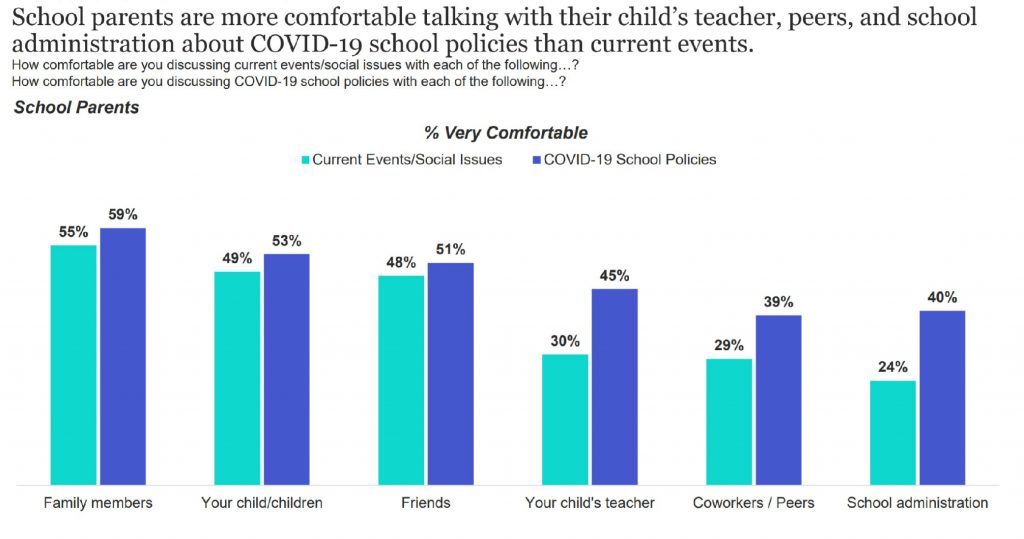EdChoice Public Opinion Tracker: Top Takeaways January 2021
With another successful National School Choice Week in the rear-view mirror, it’s time to check in on our latest monthly tracking poll results.
You can browse the full reports as well as our national and state dashboards, which illustrate public opinion on various educational issues at the beginning of the new year, at the EdChoice Public Opinion Tracker.
Each month, Morning Consult conducts a tracking poll based on a nationally representative sample of adults 18 years and older (N = 2,201, in the field January 8-15). With additional sampling, we obtained responses from 1,154 parents of school-age children so we can report more reliable information about parent subgroups by demographic.
In a nutshell: Through the fall semester, pessimism about the safety of in-person education grew, but at the beginning of the new calendar year, that discomfort appears to be dimming. This shift in trend could be partially attributed to the growth in acceptance of COVID-19 vaccines, as respondents across most demographics were significantly more likely to say they would like to receive a vaccine than in December’s survey. Interest in “pandemic pods” and homeschooling appears to have normalized, but many parents remain interested in a flexible mixture of online and in-person learning after the pandemic. Although Americans are less supportive of public institutions’ responses to the pandemic less favorably than they did at its start, school parents are more trusting of the abilities of public institutions to make good educational choices. At least two-thirds of school parents support each form of school choice we presented.
Here are our top 10 takeaways.
1. Compared to December, more Americans believe teachers and other staff at K-12 schools should be required to take a COVID-19 vaccine. Among all adults, 44 percent say public K-12 schools meeting in person should mandate teachers and other staff take a COVID-19 vaccine when available, a four-point jump from last month. Correspondingly, 42 percent of respondents believe the same mandate should apply to private K-12 schools meeting in person, also a four-point increase since December. Overall, the share of respondents that believe teachers and students should not be required or encouraged to receive a COVID-19 vaccine dropped three percentage points compared to December.
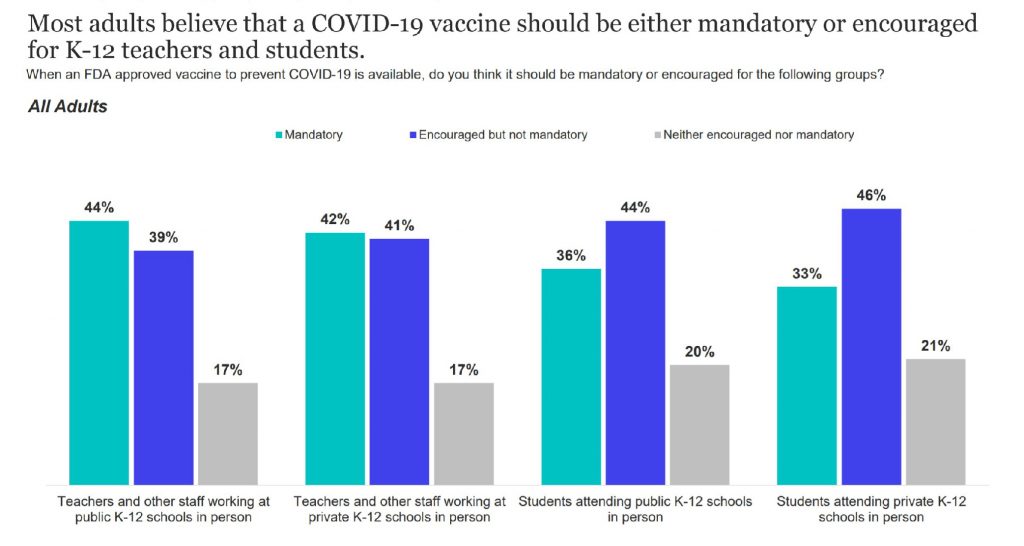
This monthly change corresponds with an increase in the share of respondents who indicated they and their children would receive COVID-19 vaccines when available. The share of parents of school-age children who would agree to be vaccinated increased five points (from 47% to 52%), and the share saying they would vaccinate their children increased six points since December, up to 48 percent in January. Among all adults, the share of respondents who would choose to receive a COVID-19 vaccine increased from 46 to 53 percent.
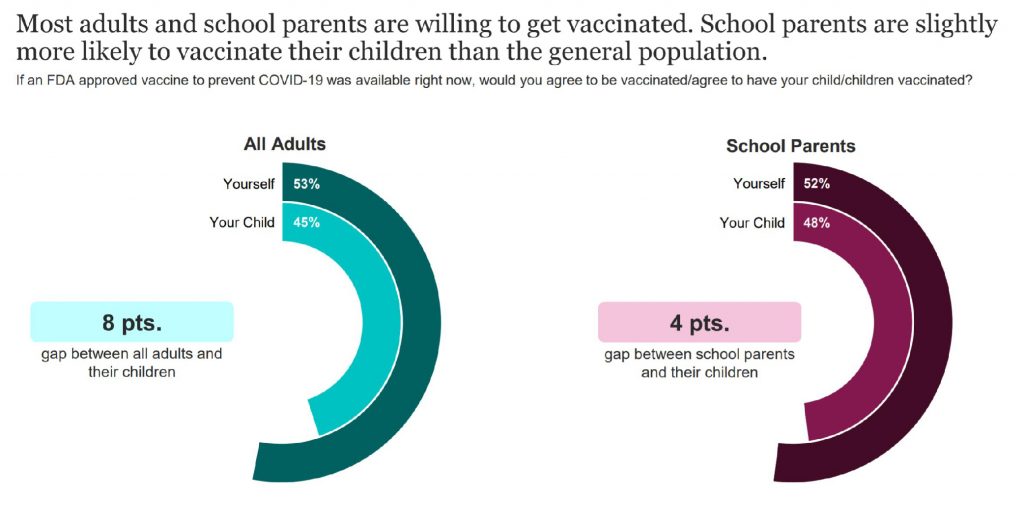
Looking at various demographic groups reveals wide range of those groups who appear more or less likely to get vaccinated. We see double-digit percentage point increases for Baby Boomers, Gen Z, the South and Independents. Other demographics with especially noticeable increases include suburbanites, middle-income earners, Hispanics and Republicans.
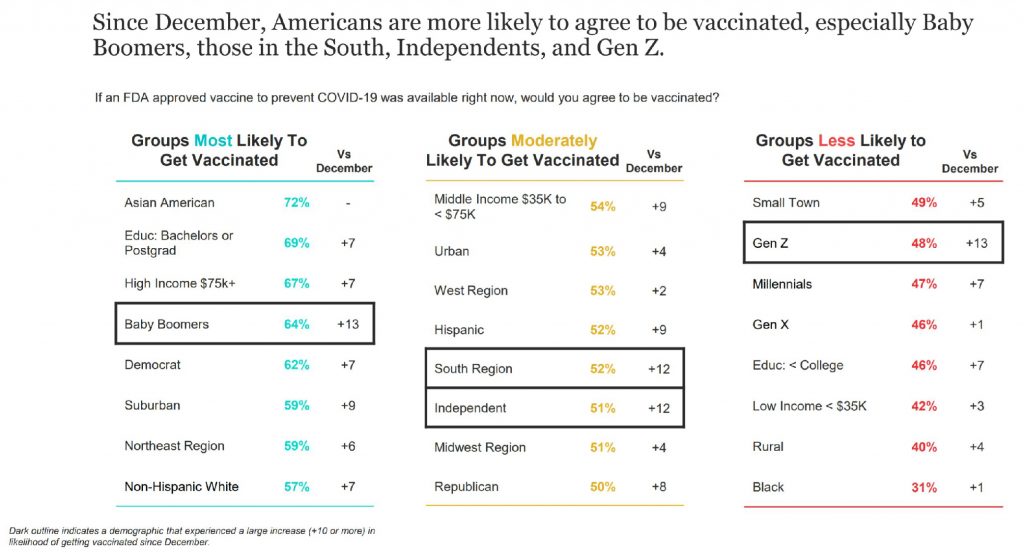
2. Public district schools are significantly less likely to provide in-person education in January than private schools. Forty-three percent of district school parents indicate their children’s schools offer remote learning only, compared to 18 percent of private school parents. Private schools are twice as likely to offer only in-person instruction than district schools (42% and 21%, respectively). More than two out of five private schools offer hybrid education, mixing in-person and online instruction. Over one-third of district schools also provide hybrid schooling.
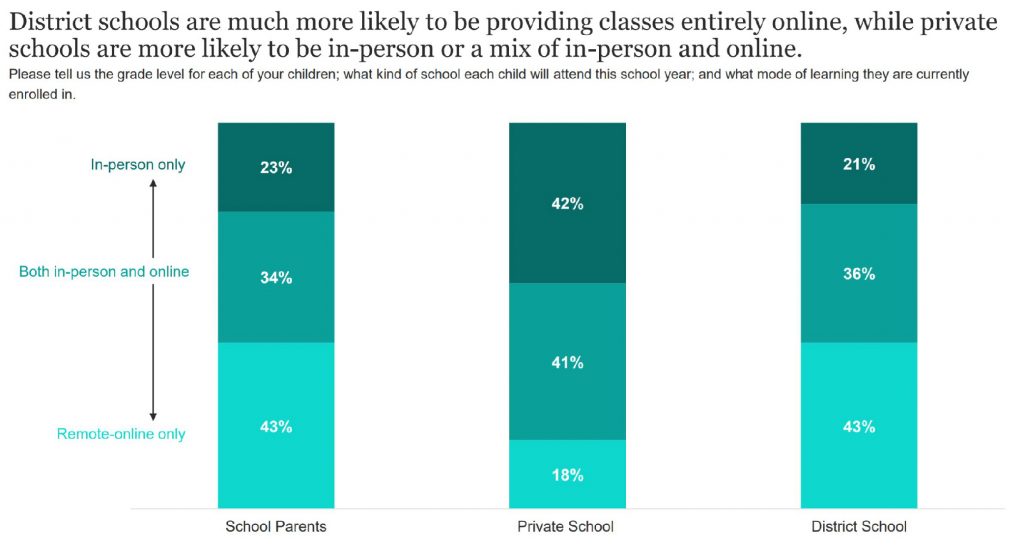
Fourteen percent of all school parents would like to continue all education at home even after the pandemic. More than two out of five parents would prefer a hybrid schooling approach, mixing home-based and in-person education. The implications of those preferences could be massive depending on the extent they hold and persist beyond the pandemic.
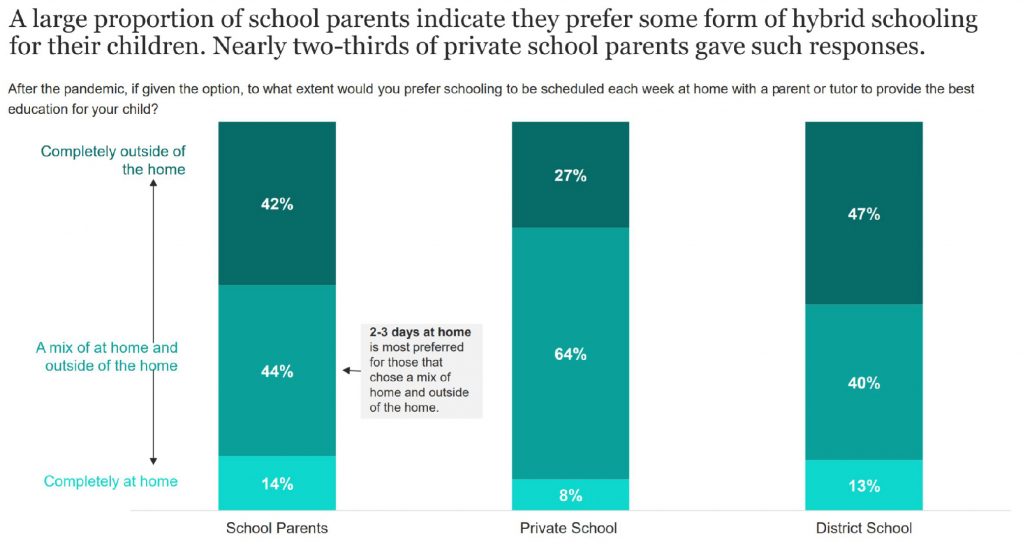
3. Reversing a four-month trend, in January more parents said they were more comfortable with their children returning to in-person instruction than in December. After holding at 42 percent for two months, the share of parents at least somewhat comfortable with children returning to schools increased to 46 percent, the first increase since summer.
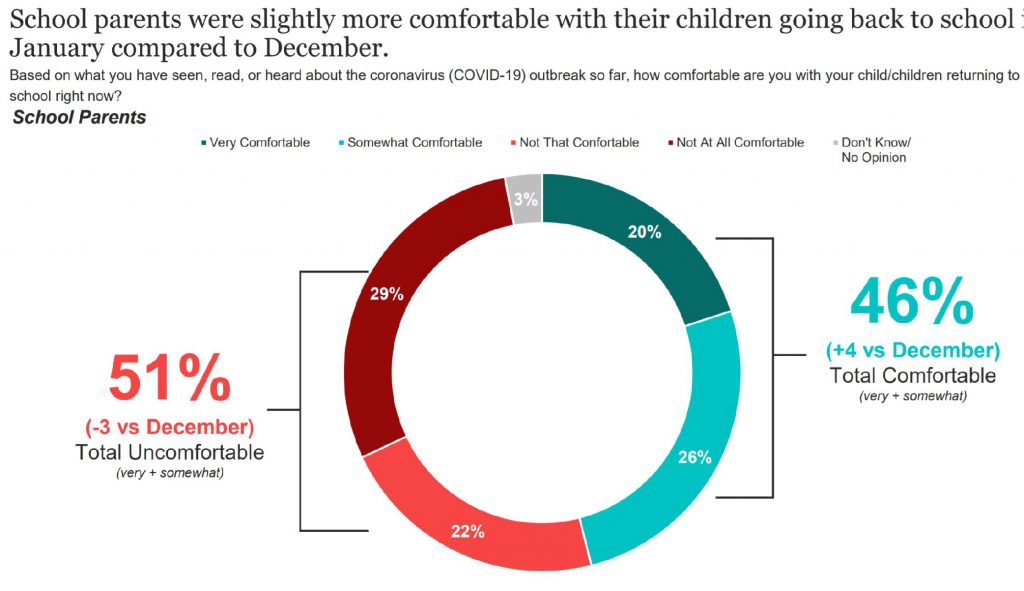
The percent of parents who were not at all comfortable with in-person education has fluctuated substantially since the beginning of the summer. After peaking at 36 percent in November, it declined to 29 percent in January.
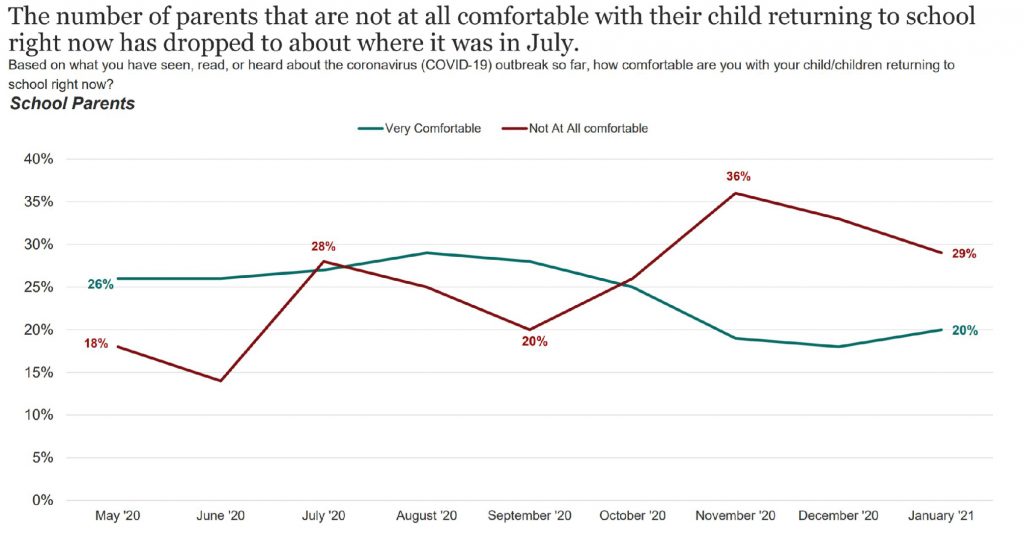
4. Participation and interest in “pandemic pods” appear to have stabilized. In our October survey, nearly one in three parents reported their children were participating in “pods” with other families. That number dropped to 15 percent in November. Interest remained the same, meaning the share of parents neither participating nor interested in pods grew to two-thirds. That pattern remained essentially unchanged in December, and January saw little change, as well.
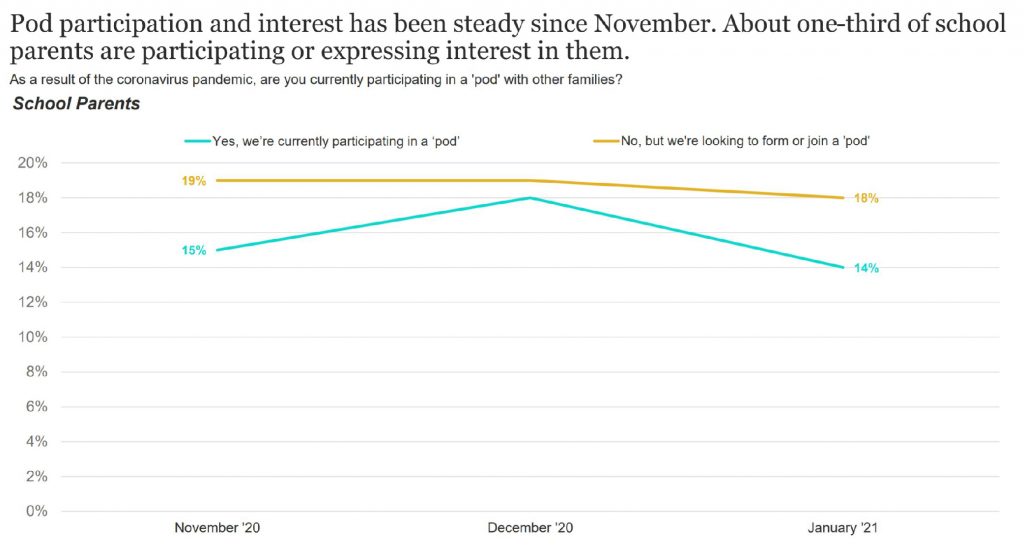
Our opinion tracker has found the majority of families participating in pods use them for supplemental learning rather than as a substitute for regular school or virtual learning (79 percent in January). As pod participation declined in November and remained relatively low, so has parents’ likelihood to seek out tutoring for their children.
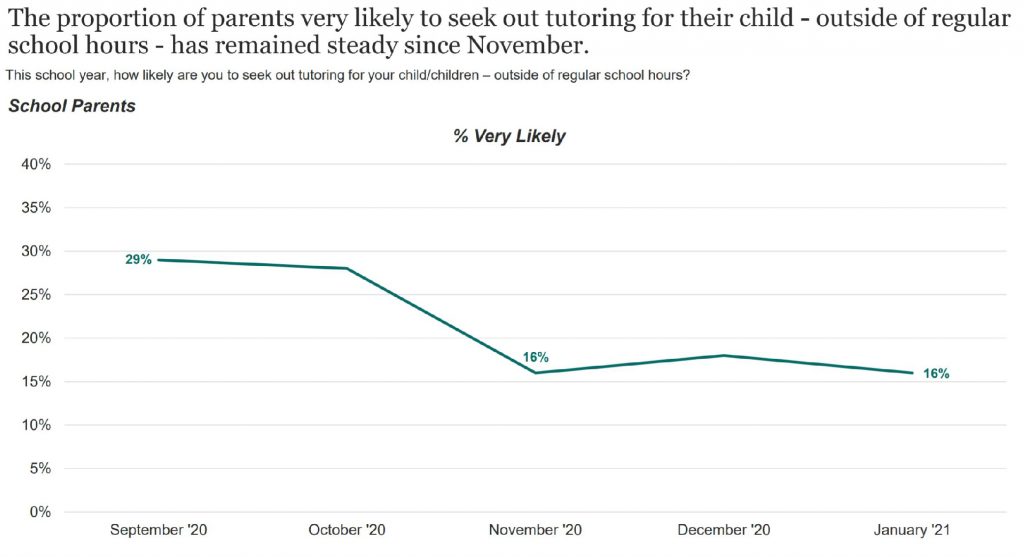
5. The share of parents saying they were much more favorable to homeschooling dropped to its lowest percentage since the pandemic began. When we began asking if parents had changed their opinions about homeschooling as a result of COVID-19, a little over a quarter of parents said they were much more favorable toward homeschooling from March to June. That number soared to 43 percent in July but has declined since. In January, strong favorability sank further to 18 percent. The net favorable response is down 16 points since July.
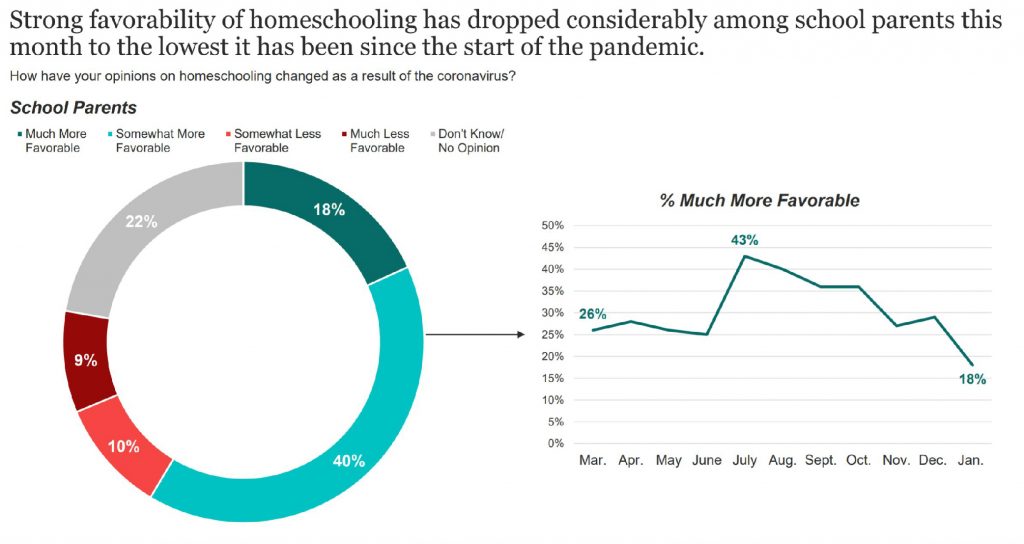
6. School parents are slightly more optimistic about the direction of education compared to December. The share of school parents who think education in their local school district is going in the right direction increased from 48 percent to 53 percent. Much of this increase was pulled by parents of K-4 students and grades 5-8 students, with optimism rising seven points and six points respectively. Optimism about the direction of education in school parents’ states increased two percentage points, mostly concentrated in parents of K-12 and high school students, while optimism about education in the United States increased three percentage points, mostly concentrated in parents of students in grades 5-8.
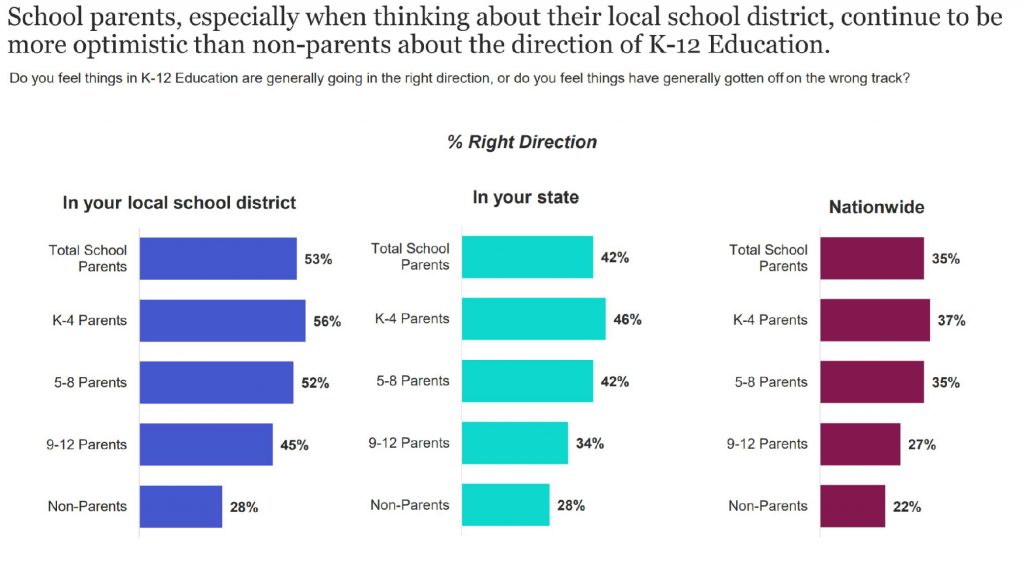
7. Majority support for school choice remains high. More than two out of three school parents support school vouchers, charter schools and education savings accounts (ESAs)—with the strongest support for the latter choice policy, which provides the most flexibility for families to personalize their child’s learning.
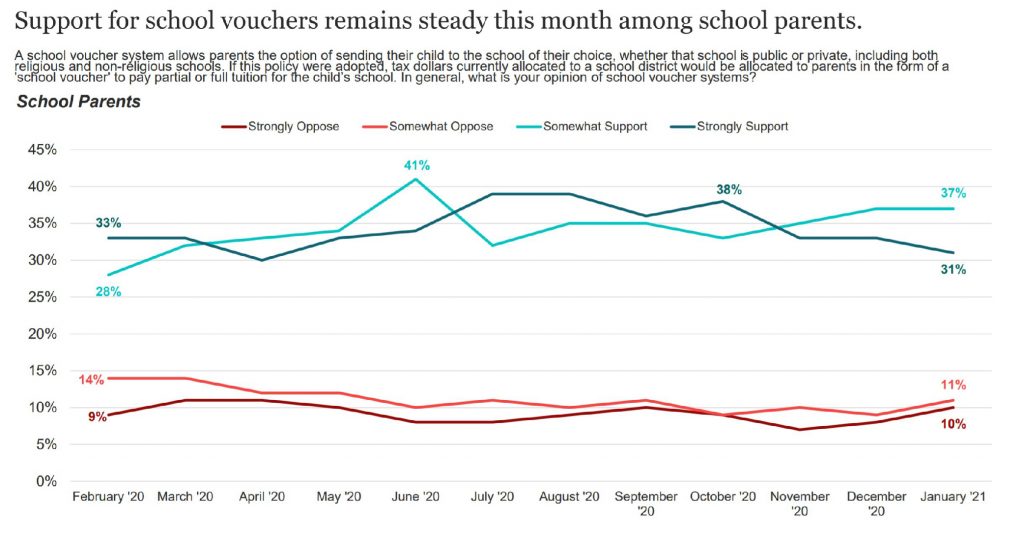
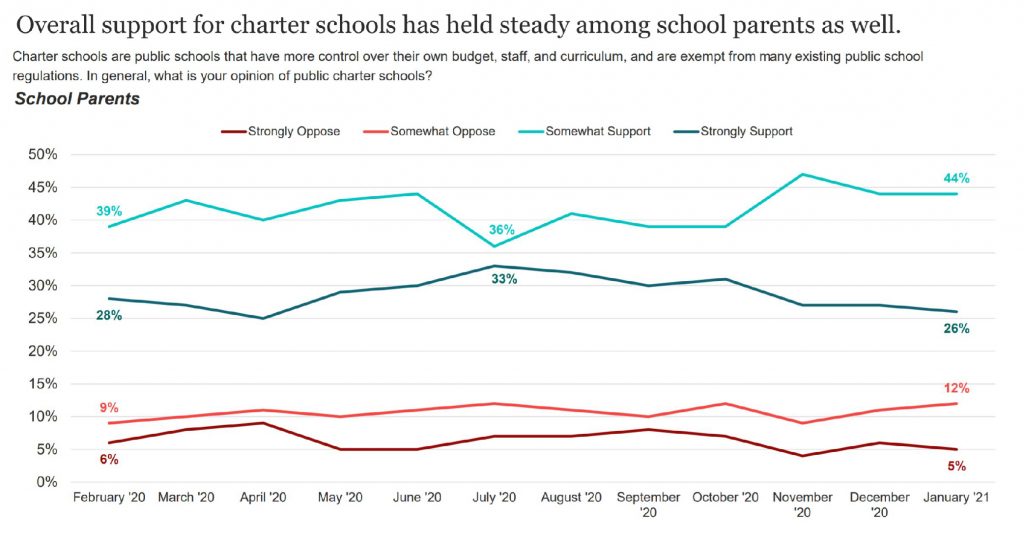
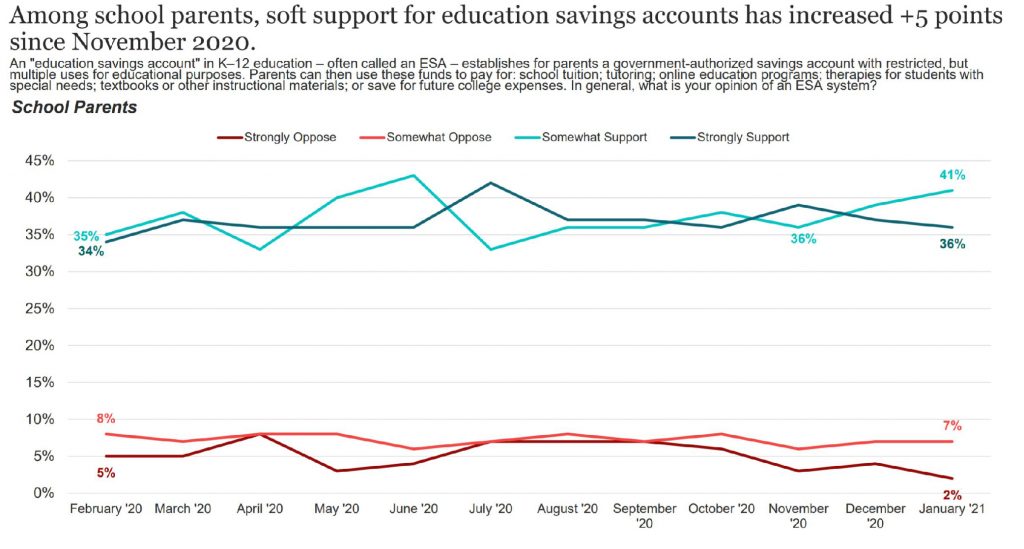
8. Relative to December, the general public expressed more trust in educational institutions to make good decisions about education. All eight educational institutions we listed received higher ratings from all respondents than they did last month. State departments of education saw the biggest improvement, jumping 10 points from 67 percent to 77 percent, followed by district superintendents with an eight-point jump. Trust in school boards and state legislatures and governors also saw significant increases. The total percentage of respondents indicating at least some trust in teachers increased from 84 percent to 90 percent. Trust in parents to make good educational decisions increased from 80 percent to 85 percent, and for school boards from 68 percent to 75 percent. The federal Department of Education saw an increase from 64 percent to 70 percent. Finally, state legislatures and governors improved from 56 percent to 64 percent.
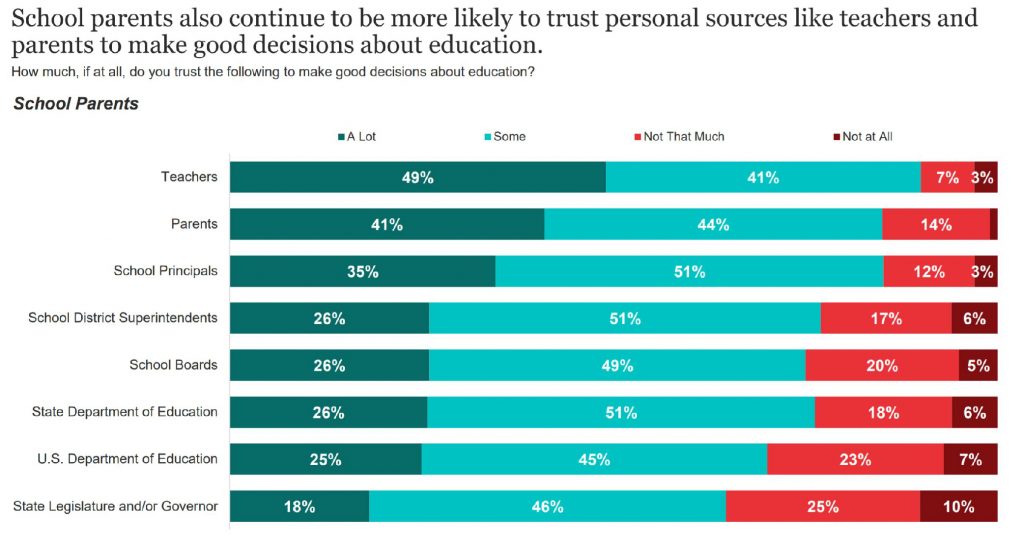
9. Positive sentiments toward public institutions’ responses to COVID-19 have declined across the board since June. At the beginning of the summer, positive opinions about schools’ responses to the pandemic outnumbered negative opinions by 39 percentage points. By January, that margin dropped to nine points. Perception of other public institutions saw similarly precipitous declines. Net positive ratings for school districts, state governments, and the federal government dropped by 27 points, 17 points, and 24 points, respectively.
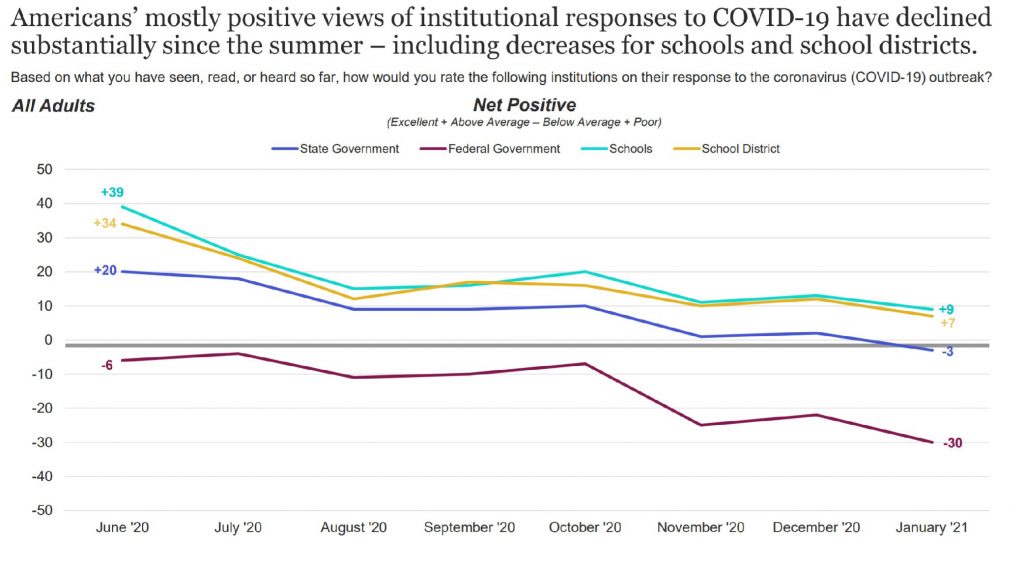
10. Less than half of school parents are very comfortable discussing COVID-19 policies at their children’s school with teachers or administration. School parents are most likely to say they are more comfortable discussing social issues and schools’ responses to the pandemic with family and friends. About two out of five parents are “very comfortable” discussing COVID-19 school policies with co-workers or peers, roughly the same share as those very comfortable talking about those issues with school administration.
